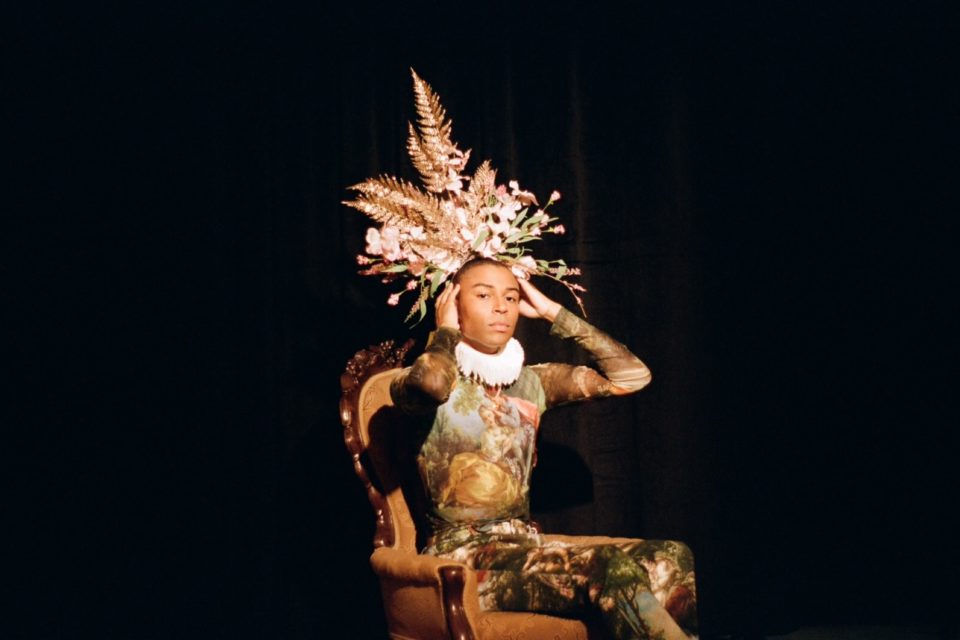To make the claim that an artist breaks the mold is to invite justifiable skepticism, since there’s rarely much evidence offered to back it up. But that’s not the case with the intricately oppositional R&B of Houston Kendrick, whose work talks back to cultural and genre norms alike.
At 25, he’s figured out how he wants to write, sing and rap about growing up in — and breaking with the codes and conventions of — the southern suburbs. In his case, that’s Hoover, Al., a bedroom community just below Birmingham.
He’s slyly on the nose about it in on his new album, Small Infinity, particularly in a song titled “The Suburbs,” which has the feel of a throwback pop-R&B number with piano chords keeping a crisp, triplet pulse.
“Lonely boy in the suburbs, learning how to love his skin color, isolated by the love he prefers, thinking he’s a good-for-nothing sinner,” Kendrick sings quietly, as though he’s intruding on the private anguish of his younger self.
His phrasing subtly picks up steam as his vantage point expands: “When he would close his eyes a vision of paradise where everybody was nice and people were on his side.”
Then Kendrick pretends to tire of recalling his melancholy introspection, antsy for an escape: “He sounds like a bummer, but he made it out the f**kin’ suburbs.”
“It really took a lot of years to really understand just how impactful growing up in the suburbs was,” he says, speaking on Zoom, “because I was one of very few Black kids, one of very few queer, gay, whatever you want to call it, kids, and honestly, one of very few black kids that wasn’t in athletics, and wasn’t excelling in athletics.”
As Kendrick goes on, he gets a little more philosophical: “In the suburbs, especially going to a massive high school, you’re sort of expected to fit a certain role based on your identity. It’s not explicitly spoken. It’s not something that people are conscious of, really, I don’t think. But you’re relegated to a role, whether you like it or not. And for me, I tried on many different costumes. I tried to be a lot of different things growing up, and nothing ever really fit.”
He did some singing in church, but says that it was in high school choir classes and community theater productions that he learned “what it meant to be an individual,” and also how freeing it could be to explore inhabiting roles when you can acknowledge that that’s exactly what you’re doing.
As a teenager, Kendrick was profoundly affected by watching Paris is Burning, the 1990 documentary spotlighting the queer, Black and brown underground drag ballroom scene in New York City, and Tumblr was his means of accessing a new generation of creative, online curation of self-presentation. “That really showed me that there is just this massive, eclectic world out there, a world of inspirations that you can pull from,” he says. Though he listened widely, to his parents’ Run-DMC, Kool Moe Dee and Prince faves and to the popular sounds of his own moment, he really got into the left-field mystique of Frank Ocean’s R&B singer-songwriter approach on the 2012 album Channel Orange.
“Even though he hadn’t explicitly come out at that point, everything about him just sort of was very magnetic to me,” says Kendrick, the video call revealing that he has an Ocean poster hanging on his wall even now. “I was in a place where I was very confused about everything, sexuality, what I wanted to do in my life. I knew I wanted to do music, but I didn’t really have the tools to see myself going far with it. And he sort of was a beacon for me; [he was] that somebody who comes from New Orleans, who is very intelligent, but just doesn’t always have the tools, and Black, queer and just very unapologetically weird and experimental. So I was just sort of like, ‘This is it for me. This is this is who I need to model my sound model, my artistic approach after.'”
Kendrick, though, got off to a fairly standard showbiz start. After a local producer spotted him in a talent competition, he got his first taste of studio work, recording a boyishly suave R&B single and filming a music video alongside some of his actual high school friends, including the girl he pretended to flirt with in several scenes.
“That was baby Houston’s first single,” Kendrick says, “and I was so excited about it. I was so proud of it. It wasn’t who I was. I knew I was sort of playing a character there. That was where I was making the conscious choice to be in a different kind of drag, a straight man drag. But I stand by it. I really loved that experience.”
The next step was Belmont University, where there were programs set up to steer students down well-trod paths to music industry success. But even there, he had to search for his own direction.
“I think it was because I felt lots of pressure to be commercial and to sort of fit into the box that Black R&B singers are supposed to fit into. Even though I came up listening to so much experimental R&B, it still felt like the world at large wants a certain thing from a Black R&B singer.”
On his first full-length project, a 2018 mixtape titled Pink, Kendrick signaled his impatience with those expectations. For one thing, he decided to allow himself to try rapping — not the sort of broody sing-rapping that’s taken hold in the post-Drake era, but a delivery that was meant to provide a tough, insubordinate contrast to his supple vocal control.
“I always wanted to rap,” he explains. “I always wanted to communicate these emotions in the way that rappers could, just pure bravado and confidence. It wasn’t until I made my song ‘Blackthingz’ that I felt comfortable enough. I was writing about being angry and uncomfortable in a society that really doesn’t want me, and I didn’t know how else to communicate that other than just really say it. When I incorporated those bars, I was like, ‘I can’t go back now. This feels amazing to me.'”
Where other artists might sample old soul, funk or hip-hop sounds they consider foundational, he grabbed audio from Paris Is Burning. “What that represented at the time it came to the world was just sort of like so countercultural, and that’s something that I wanted to mirror.”
Kendrick continued refining his sensibilities, and turned to music-making peers in Nashville for input and sonic assistance. Those exchanges went virtual when Kendrick resorted to the same stopgap measure as so many other post-college twenty-somethings and returned to his parents’ house at the start of the pandemic. But the experience of holing up in his suburban childhood bedroom didn’t constrict his imagination in the least.
“I needed a familiar context,” he reasoned. “Going back to my parents’ home gave me such a great opportunity to get back in touch with my own child self. I know it sounds super metaphysical or whatever, but your inner child does need to be nurtured. And that’s something that I had completely forgotten, and just sort of left that little boy alone and cold and just sort of still sad. Getting to do things not over, but reexamine those things in a way that I hadn’t gotten to before, made for such a crazy creative energy that I have not felt ever.”
Kendrick channeled that energy into collecting tracks that appealed to him from beatmakers and producers in and beyond Nashville, sometimes requesting changes, and using them as canvases for his alluringly unfettered melodies and vignettes of sly, searching, youthful audacity.
One day he might reflect on the rejection and restlessness that simmered in him, attentive to both his youthful vulnerability and his frustration at the all-too-narrow and predetermined social and heteronormative scripts pressed on him by the adult world. Another day he might ponder sources of casual pleasure or how he really wanted to be seen. All along, he’d layer delicate thickets of vocal ideas into his arrangements.
One of the people he started sending his ideas to was his college friend, multi-instrumentalist and producer Bobby Knepper. “I’ve really gotten to look under the hood and experience the music a little bit from his lens and see how he crafts his songs and understands vocal arrangement, the way he understands songwriting and how he can build such a complex song with the simplest production,” says Knepper. “Mostly I’m helping him just mix his vocals right, because he creates this huge universe over a relatively static instrumental with just his vocals.”
Kendrick returned to Nashville and kept on creating musical microcosms until he had what he calls his Small Infinity. His new album is alive with his agile vocalizing, from elegant falsetto singing to artfully insolent rapping, and his many, distinct expressive moods, each of them subtly contrarian.
“I think that because Black people are so nuanced and we’re not monolithic,” he says, “it only makes sense that the best way to communicate that through the medium of sound is to really embody the different facets of yourself, just to make it clear to people, make it digestible — not necessarily digestible in the way of what’s market-safe or whatnot. But I don’t know any other way to explain to you that I am a nuanced, multifaceted individual other than to really give these characters and these qualities a name, you know, and a voice. These are all real parts of myself, very real that I experience every single day. And it’s just it’s a beautiful feeling to be able to animate them.”

